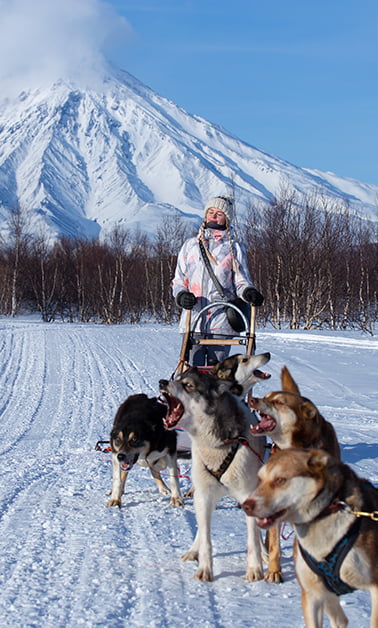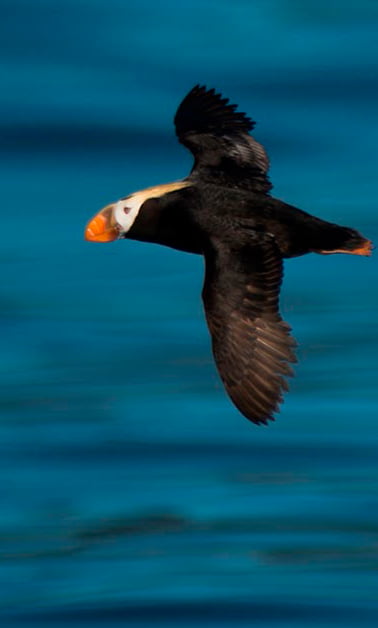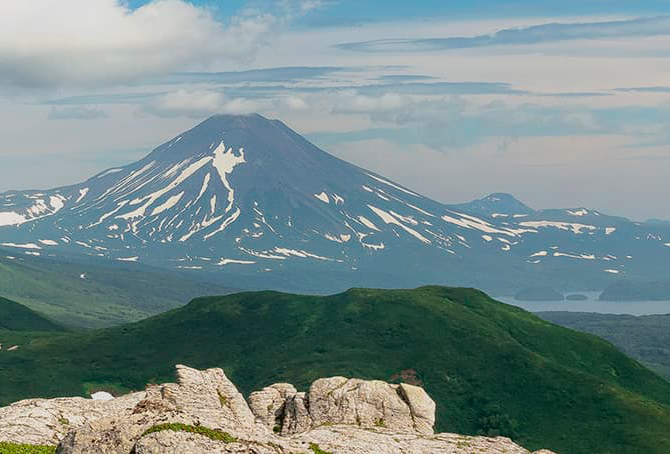
The city of Petropavlovsk-Kamchatsky
Administrative, industrial and cultural centre of Kamchatka Krai, a city of military glory. It is located in the south-east of the peninsula of the same name, and the number of its inhabitants reaches 181 thousand people.
You can get to Kamchatka from other regions of Russia only by plane. Flights arriving at this beautiful region, land at the international airport Yelizovo, Petropavlovsk-Kamchatsky. When you approach the capital of the region, you can see from above that the city spread wide on the shore of Avacha Bay, which belongs to the Pacific Ocean. The overlook gave you a breathtaking panorama of the city surrounded by mountains and water. Very close to Petropavlovsk-Kamchatsky, there are Avachinskaya and Koryakskaya Sopkas, which are active volcanoes.
At the airport, you can see the Li-2 plane, turned into a monument. This Soviet military transport was intensively used in the '40s of the twentieth century, and during the war, it worked a lot, transporting goods. Yelizovo was its Kamchatka base.
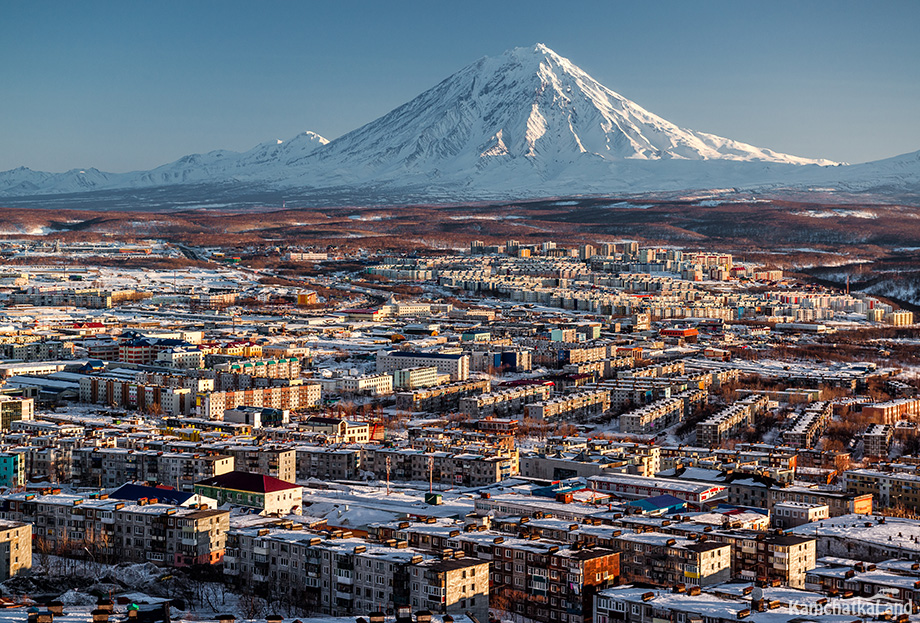
City population
The indigenous inhabitants of Kamchatka are Itelmens and the Chukchi, but now these peoples do not constitute the majority of the peninsula population. In Petropavlovsk-Kamchatsky, people of different nationalities live, but most of all Russians. These are the descendants of those, who moved here in the 19th century and came to explore the Far East in Soviet times, as well. In terms of population, the main city of Kamchatka is not densely populated. It takes 105th place among more than one hundred thousand cities in Russia. Now, about 180 thousand people live in the city.
In the XIX century, it was a small village with population ranged from 400 to 1,500 people over the years. The development of the city and the increase of the population fell in the Soviet period. According to information of 1989, 286 thousand people lived in Petropavlovsk-Kamchatsky but this number has decreased by about one hundred thousand over the past thirty years. The greatest drift occurred during the crisis in the '90s of the past century. By the beginning of the XXI century, the population of Petropavlovsk-Kamchatsky stabilized. This is mainly the working-age population, pensioners make up about a quarter of the total number of residents. The percentage of people with higher education is the same.
History of Petropavlovsk-Kamchatsky
Among the cities of the Far East, Petropavlovsk-Kamchatsky is one of the oldest. Cossack explorers laid the first fort on the site of the future city back in 1697. Not far from the Itelmen camp of Aushin, they built docks for yasak (a tribute paid in furs) and guarded them.
The settlement began to develop on the site of the old fort in 1740. The significant event is connected with the name of the navigator Ivan Yelagin, who moved on the boat "Holy Archangel Gabriel" from Okhotsk to Kamchatka in order to examine the Avacha Bay in detail in order to compile its map, necessary for shipping. In addition, Yelagin was instructed to build houses and warehouses on the expectation of expedition arrival.
In mid-June, his boat landed in the Avacha Bay near Aushin, becoming the first ship to arrive here. By the fall, he had built several wooden houses, barracks, and barns. Yelagin reported this to his superiors. Just a few days later, at the end of September, and then at the beginning of October, ships of the Second Kamchatka Expedition led by Aleksei Chirikov and Vitus Bering arrived here. Their packet boats were named after the holy apostles Peter and Paul, and therefore the settlement built by Yelagin was called Petropavlovsk.
The “Holy Apostle Peter”, led by Bering, arrived here on October 17, so now this date is celebrated as the city’s birthday. The well-known researcher of Kamchatka Stepan Krasheninnikov, who visited these places at about the same time, wrote that “officer lodges, barracks, shops, and another structure” were built on the banks of Avacha Bay. That is, the infrastructure of the fort began to develop immediately after the construction of the first houses
After Bering’s expedition to Petropavlovsk, ships did not enter for four decades, until two English ships appeared, making the Third Round-the-World Expedition led by John Cook. The British liked the bay, as well as the settlement there. Since then, Petropavlovsk has become a must-see place for sailors around the world.
The status of the settlement changed in 1912 when the fort was called the city of Peter and Paul Harbor. It became the only city in Kamchatka, and the residence of the Governor-General was located here. Admiral Vasily Stepanovich Zavoyko, a participant of the Battle of Navarino, who later went on round-the-world expeditions and explored the Pacific coast, first took this position. In 2014, a monument was erected to this wonderful person. In 1849, the Peter and Paul Harbor received the status of a regional center. As such, a few years later it showed its worth in the Crimean War.
One might wonder what a connection between Kamchatka and the Crimea is. Still, it was. When the Crimean War began, the British and French tried to weaken the enemy by attacking Russia from the east, as well. The English fleet was recognized as the best in the world, and the French were equipped with the latest technology, the path to the Far Eastern shores of Russia was already common, so the governments of Great Britain and France were confident in success.
They did not expect any serious resistance in Kamchatka. Help from mainland Russia could have been coming here for months. However, the attackers got it wrong. The defenders of the Peter and Paul Harbor under the leadership of Zavoyko managed to repel the attack, the Anglo-French squadron retreated. Then, they erect a chapel in memory of the dead soldiers on Nikolskaya Sopka. Now Petropavlovsk-Kamchatsky deservedly bears the title of "City of Military Glory."
Until the middle of the twentieth century, the city did not have active development. In fact, it was a village with randomly scattered wooden houses. The base of the Pacific Fleet was located here, ships came here, and it was not considered in another role. Everything began to change in the 60s of the twentieth century. An active building started in Petropavlovsk-Kamchatsky (the city was called so), the population grew, cultural institutions, an important part of the center of the region, appeared.
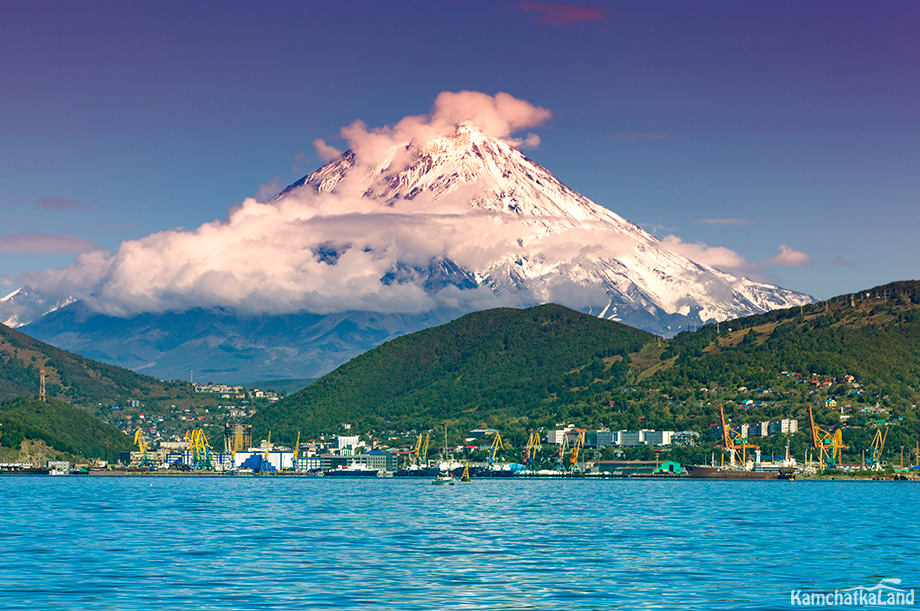
City infrastructure
Petropavlovsk-Kamchatsky was originally built without any plan as a temporary residence, though its modern structure is not well thought out either. When the settlement was small, there was no point in dividing it into districts. After the city had grown, two districts appeared but soon this administration was canceled. Nowadays, Petropavlovsk-Kamchatsky is divided into several neighborhoods. They was created taking into account the natural topography of the city.
The uneven terrain creates certain difficulties as the city is scattered over a large territory and it can be difficult to get from one district of the city to another.
Buses are the main public transport in the city. All routes lead to the Central District what is very convenient given the spreading location of the city. Most citizens have private transport but this causes a parking problem. There are few special parking lots so public spaces not intended for parking are full of cars. The condition of the roads is not the best. Because of the constant geological activity, even if it is not strongly expressed, the asphalt cracks.
Tourism development dictates its infrastructure requirements. The need for good hotels, cafes, restaurants is growing every day. What is being proposed in Petropavlovsk-Kamchatsky now is quite good but there is still something to strive for.
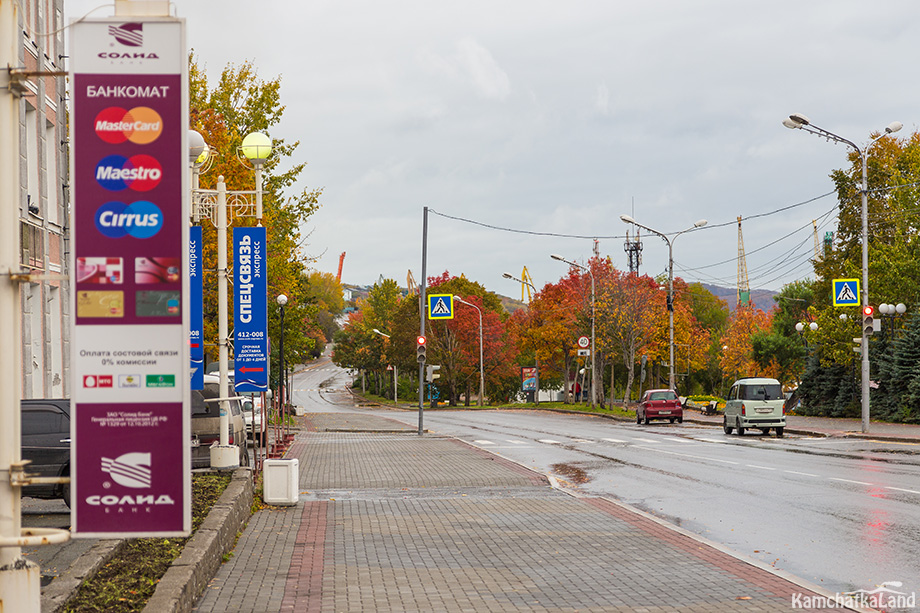
Where to go: sightseeing and places of interest
Petropavlovsk-Kamchatsky cannot boast of significant architectural monuments. The buildings here appeared mainly in the ’60-’80s of the last century, so the capital of the region looks like a Soviet city with typical houses though in amazing natural surroundings. There is a local flavor in the design associated with the climate. For example, the walls are covered with the metal sheets from the side from which the coldest and strongest wind blows. The wind situation in the city is far from calm, so such forethought is understandable.
Another feature is the so-called "captain's bridges" in the houses. Because of the seismic instability, buildings are equipped with shockproof offsets. In residential buildings, such an offset is designed as a small balcony. Such bay windows, having practical significance, play an aesthetic role and decorate houses at the same time.
Local museums are waiting for residents and visitors to the city; they are very interesting and introduce different aspects of Kamchatka life. In addition to the joint and art museums, it will be interesting to visit the museums of the Institute of Volcanology and Seismology, as well as the Scientific Institute of Fisheries and Oceanography. The famous Kamchatka salmon has its own museum. There is also a volcanic museum "Volcanarium". This is not a complete list. There are exhibition halls, as well, including the Center for Contemporary Loft Art "Park of Culture".
When the theater season is open, you can continue the evening cultural program at theaters or at the Philharmonic. Cinemas are open daily.
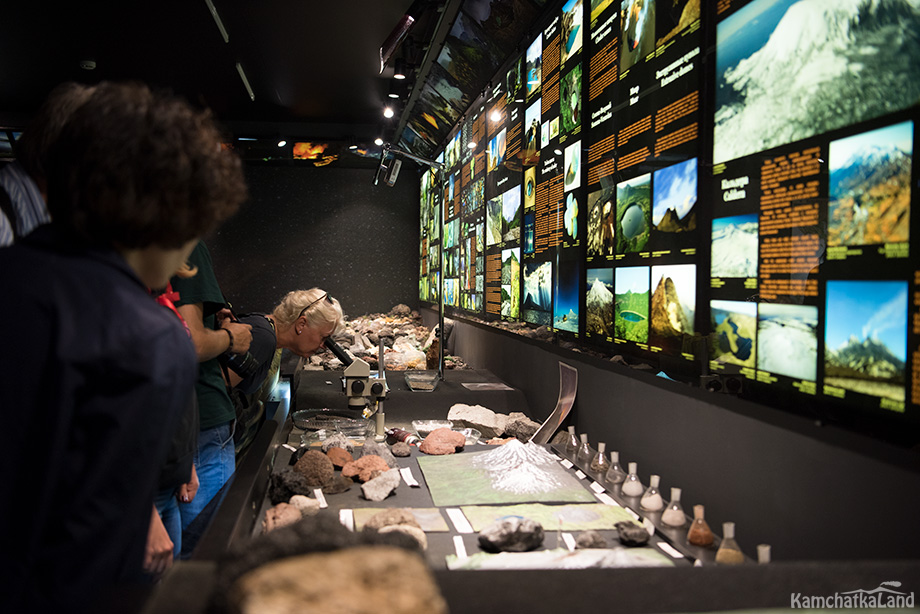
City Economy
In Petropavlovsk-Kamchatsky, there are fishing and fish processing enterprises. This is not surprising since the proximity of the marine wealth of the Pacific naturally contributes to the development of this sector of the national economy. There are both large and many small companies engaged in the extraction and processing of fish and seafood. In the period of salmon spawning, they are especially active.
The port of Petropavlovsk-Kamchatsky has every prospect of becoming an important stronghold of the Northern Sea Route. Now there is a transshipment of a variety of goods. There is also a passenger service. In 2017, a new seaport was opened and made it possible for passengers of cruise ships and cruise liners to stay comfortably here.
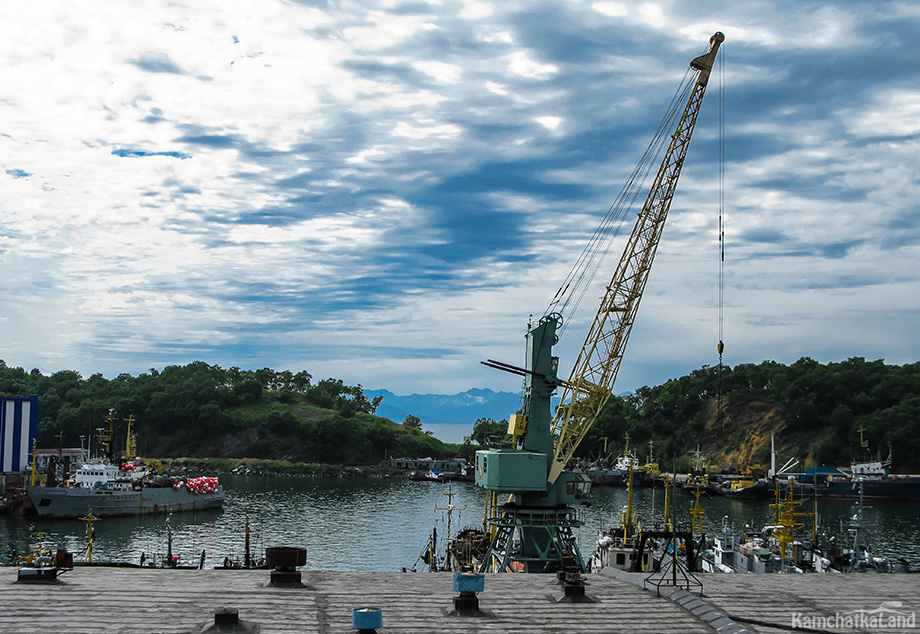
The city has a well-developed tourism business. The beauty of Kamchatka attracts people who are ready to overcome great distances and spend a fair amount of money to see amazing places with their own eyes. Travel agencies develop numerous routes so that guests can look into every interesting corner of the peninsula. You can choose from various modes of transportation – hiking, car, helicopter tours, by water on boats.
Ski tourism is gaining momentum. Since Petropavlovsk-Kamchatsky is located among the hills, ski resorts are literally inside the city. In addition, there are ski-biathlon tracks of international level in Petropavlovsk-Kamchatsky.
Mining companies also contribute to the economy of the city and the region. In Kamchatka, gold, silver, and platinum are mined.
Climate and weather in Petropavlovsk-Kamchatsky
As throughout Kamchatka, the climate in Petropavlovsk-Kamchatsky has developed under the great influence of the Pacific Ocean. Mild winters combined with cool summers. There is almost no heat. The warmest month is August, the average temperature at this time is 13 above Celsius. Summer is not rainy. A tangible wind blows throughout all seasons.
Geological features of the area suggest a seismic activity. Residents of Petropavlovsk-Kamchatsky are at any moment ready for the possibility of an earthquake.
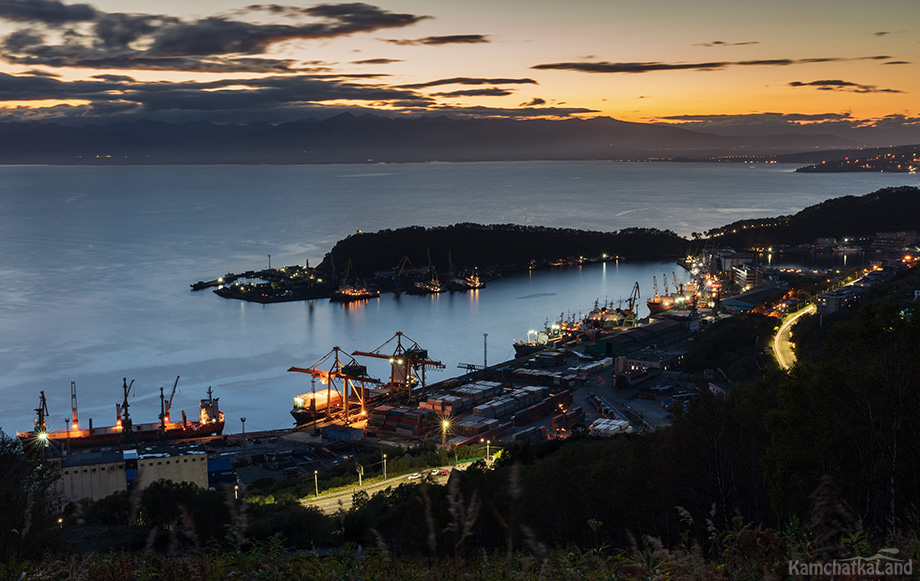
Popular tours with Kamchatkaland
Ready-made packages for your travel and vacation in Kamchatka

